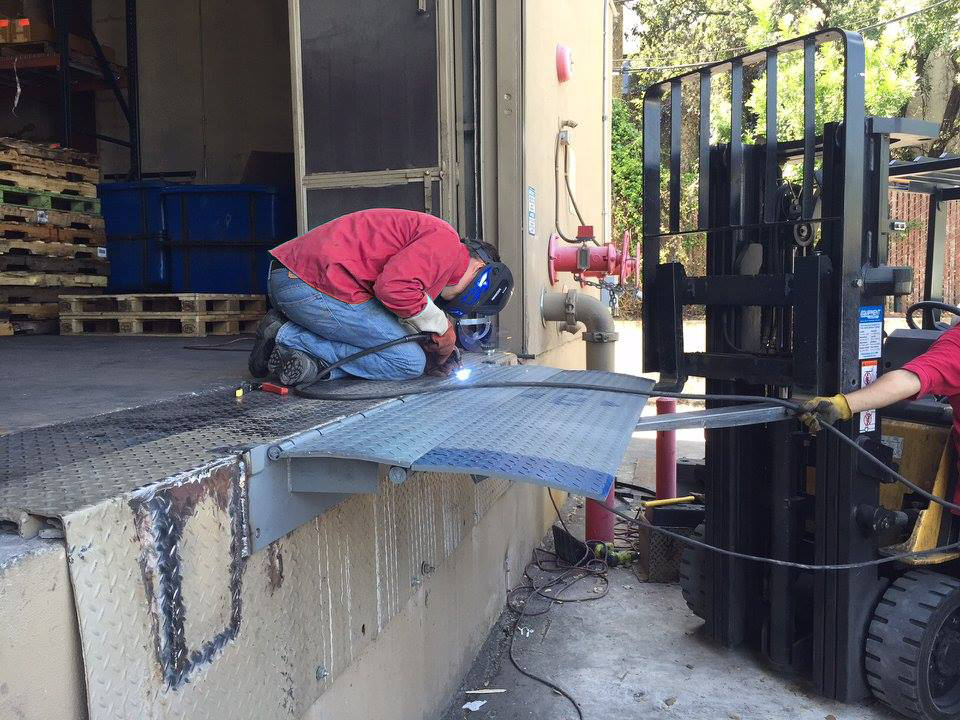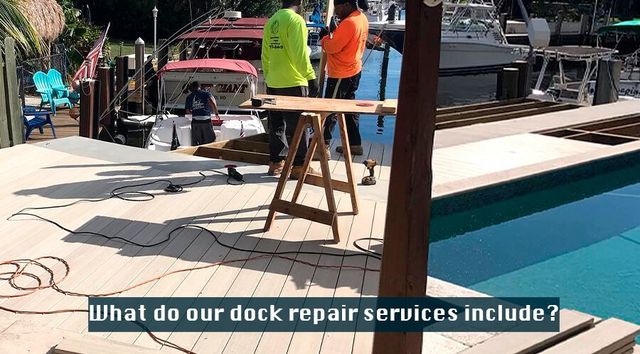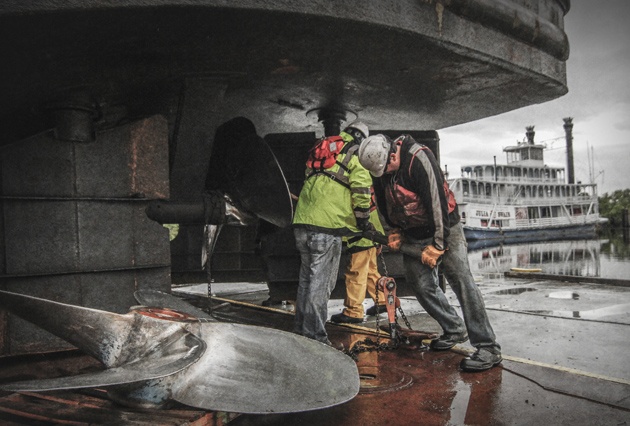Leading Signs You Required Specialist Dock Repairs This Season
Leading Signs You Required Specialist Dock Repairs This Season
Blog Article
Effective Dock Repair Work Techniques: Making Sure Structural Stability
Guaranteeing the architectural stability of anchors with efficient repair service strategies is extremely important for the long life and security of aquatic centers. This includes a multi-faceted technique beginning with extensive evaluations using advanced technologies like sonar devices and remotely operated vehicles (ROVs) to spot both visible and hid problems. Ultimately, selecting the best repair work materials, such as composite products and corrosion-resistant alloys, is crucial for resilience. Structural support techniques, including the implementation of cross-bracing systems and load-distribution plates, play an essential function in mitigating stress and anxiety factors. The relevance of these techniques ends up being evident when discovering advanced fixing methods and preventative upkeep techniques.
Analyzing Dock Damage
Assessing dock damage is a crucial initial action in making certain the architectural honesty and safety and security of any docking center. Trick elements to take a look at consist of the dock's structure, pilings, outdoor decking, and equipment (Dock Repairs).
Architectural designers or qualified examiners typically do these analyses using specialized tools and techniques. For example, underwater evaluations might utilize sonar equipment or remotely operated lorries (ROVs) to detect immersed damages. Above water, visual assessments are matched by utilizing dampness meters and other analysis devices to uncover underlying concerns not promptly visible to the naked eye.

Deciding On Repair Materials
Choosing the ideal fixing materials is a critical action in the dock repair process, one that directly influences the durability and performance of the repaired structure. Material selection should be driven by aspects such as ecological problems, load-bearing requirements, and compatibility with existing dock elements. For circumstances, timber is a traditional choice for docks because of its natural durability and aesthetic charm. However, picking the right sort of wood, such as pressure-treated lumber or normally rot-resistant species like cedar or teak, is important to endure marine atmospheres.
Along with wood, composite products are progressively prominent due to their longevity and reduced maintenance needs. Composites, usually made from a mix of plastic and wood fibers, offer excellent resistance to rot, pests, and UV damage. For steel docks, selecting corrosion-resistant alloys such as galvanized steel or marine-grade aluminum is necessary to avoid corrosion and ensure structural integrity in saline water conditions.
Epoxy materials and marine-grade sealants are vital for repairing cracks and securing joints, giving a water-proof obstacle and enhancing the dock's general toughness. By meticulously selecting top notch products, dock repairs can achieve resilient outcomes, thus guarding against future degradation and guaranteeing risk-free, reliable use.
Structural Reinforcement Methods
Reliable architectural reinforcement strategies are crucial in guaranteeing the stability and durability of dock repair services. One fundamental method involves the use of steel or composite support bars (rebar) within concrete frameworks. Rebar gives added tensile stamina, protecting against cracks and dispersing loads much more uniformly. This method is particularly effective for anchors exposed to hefty lots or rough ecological conditions.
An additional important technique is the application of fiber-reinforced polymers (FRP) These materials supply high strength-to-weight proportions and excellent resistance to deterioration, making them suitable for strengthening wooden or concrete docks. FRP can be used in strips or sheets and adhered with epoxy materials to boost structural integrity.
Supporting and anchoring systems also play an important role in structural reinforcement. Cross-bracing, using steel or wooden light beams, can combat lateral pressures, minimizing swaying and movement. Securing systems, such as helical piers or driven stacks, give a secure foundation by moving tons to much deeper, a lot more stable dirt layers.
Lastly, the assimilation of load-distribution plates can assist distribute weight a lot more uniformly throughout the dock's surface, mitigating local stress factors. These methods jointly make sure that docks continue to be safe and robust, efficient in holding up against the rigors of their functional setting.
Advanced Repair Service Methods

One more sophisticated method includes undersea welding, which enables repair services to be conducted without the need to dewater the area. This method is especially helpful for addressing architectural concerns in immersed dock parts, making certain marginal disruption to procedures. Boosted welding strategies, paired with robot systems, provide precision and reliability, thereby extending the lifespan of the dock.
In addition, cathodic defense systems are applied to stop rust in metallic dock frameworks. By utilizing sacrificial anodes or pleased present systems, these methods efficiently mitigate the electrochemical procedures that cause material deterioration.
Last but not least, advanced tracking innovations, such as structural wellness monitoring (SHM) systems, provide real-time information on the click site condition of dock frameworks. These systems allow proactive upkeep and timely treatments, eventually ensuring the lasting architectural stability of the dock.
Upkeep and Avoidance
Maintenance and avoidance are fundamental concepts that underpin the long life and security of dock structures. Routine evaluations are paramount, permitting early discovery of damage, possible weak points, and environmental effects. A positive method, entailing routine look for deterioration, rot, and structural changes, mitigates expensive repairs and extends the dock's functional life.
Safety nets ought to consist of using protective layers to metal elements to guard against rust and making use of cured wood to withstand degeneration. Additionally, making sure correct drainage and ventilation can avoid water buildup, which is an usual reason for structural deterioration. Including quality products and adhering to producer guidelines throughout building and construction and repair phases likewise play vital duties in enhancing sturdiness.

Training workers in dock upkeep finest techniques makes certain constant application of safety nets. Leveraging technological advances, such as drones for inspections and sensing units for real-time tracking, can further boost upkeep efforts. By focusing on upkeep and prevention, dock proprietors can make certain structural integrity, functional security, and affordable monitoring over the dock's life expectancy.
Final Thought
To conclude, keeping the structural honesty of marine facilities necessitates thorough dock repair service techniques. Detailed assessments using innovative tools discover both visible and concealed description problems, while the choice of ideal repair service products boosts toughness. Executing architectural reinforcement techniques addresses stress points properly. Advanced repair work strategies, coupled with routine upkeep practices, make sure the dock remains functional and safe under varied environmental problems. Embracing these strategies dramatically prolongs the life expectancy and performance of aquatic infrastructure.
Making certain the architectural integrity of docks via effective repair techniques is critical for the long life and safety of marine facilities.Selecting the appropriate repair work materials is a critical step in the dock remediation process, one that directly affects the longevity and efficiency of the fixed framework.Efficient go to the website structural reinforcement techniques are crucial in making sure the stability and longevity of dock repairs. By prioritizing upkeep and avoidance, dock owners can make certain architectural honesty, functional security, and affordable management over the dock's lifespan.
In conclusion, keeping the architectural stability of marine centers demands detailed dock repair work techniques.
Report this page